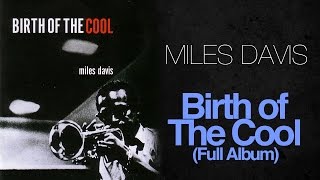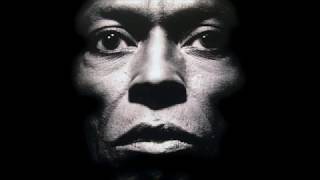Tuesday, 28 October, 2025г.
















Где искать: по сайтам Запорожской области, статьи, видео ролики
пример: покупка автомобиля в Запорожье
Miles Davis - Kind of Blue (1959) - [Best Jazz Records]
Classic Mood Experience The best masterpieces ever recorded in the music history.
Join our Youtube: https://goo.gl/8AOGaN
Join our Facebook: http://goo.gl/5oL723
Miles Davis - Kind of Blue (1959)
00:00 So What (1959)
09:18 Freddie Freeloader (1959)
18:59 Blue In Green (1959)
24:26 All Blues (1959)
35:54 Flamenco Sketches (1959)
Miles Dewey Davis III (May 26, 1926 – September 28, 1991) was an American jazz trumpeter, bandleader, and composer. He is among the most influential and acclaimed figures in the history of jazz and 20th century music. With his ever-changing directions in music, Davis was at the forefront of a number of major stylistic developments in jazz over his five-decade career.
Born and raised in Illinois, Davis began performing in 1940s New York with saxophonist Charlie Parker before recording the Birth of the Cool sessions for Capitol Records, which were instrumental to the development of cool jazz. In the early 1950s, he recorded some of the earliest hard bop music while on Prestige Records but did so haphazardly due to a heroin addiction. After a widely acclaimed comeback performance at the Newport Jazz Festival in 1955, he signed a long-term contract with Columbia Records and recorded the 1957 album Round About Midnight. It was his first work with saxophonist John Coltrane and bassist Paul Chambers, key members of the sextet he led into the early 1960s. During this period, he alternated between orchestral jazz collaborations with arranger Gil Evans, such as the Spanish music-influenced Sketches of Spain (1960), and band recordings, such as Milestones (1958) and Kind of Blue (1959). The latter featured harmonies developed by pianist Bill Evans and was an innovative work in the emerging modal jazz style, eventually becoming arguably the most popular jazz album ever.
Davis made several line-up changes while recording Someday My Prince Will Come (1961), his Blackhawk concerts, and Seven Steps to Heaven (1963), another mainstream success that introduced bassist Ron Carter, pianist Herbie Hancock, and drummer Tony Williams. After adding saxophonist Wayne Shorter to his new quintet in 1964, Davis led them on a series of more abstract recordings often composed by the band members, helping pioneer the post-bop genre with albums such as E.S.P (1965) and Miles Smiles (1967), before transitioning into his electric period. During the 1970s, he radically experimented with rock, funk, African rhythms, emerging electronic music technology, and an ever-changing lineup of musicians, including keyboardist Joe Zawinul, drummer Al Foster, and guitarist John McLaughlin. This period, beginning with Davis' 1969 studio album In a Silent Way and concluding with the 1975 concert recording Agharta, was the most controversial in his career, alienating and challenging many in jazz. His million-selling 1970 record Bitches Brew helped spark a resurgence in the genre's commercial popularity with jazz fusion as the decade progressed.
After a five-year retirement due to poor health, Davis returned to recording new music and performing live in the early 1980s, which found him employing younger musicians and pop music sounds on albums such as The Man with the Horn (1981) and Tutu (1986).
FROM WIKIPEDIA: https://en.wikipedia.org/wiki/Miles_Davis
Kind of Blue is a studio album by American jazz musician Miles Davis, released on August 17, 1959, by Columbia Records. It was recorded earlier that year on March 2 and April 22 at Columbia's 30th Street Studio in New York City. The recording sessions featured Davis's ensemble sextet, consisting of pianist Bill Evans, drummer Jimmy Cobb, bassist Paul Chambers, and saxophonists John Coltrane and Julian "Cannonball" Adderley, together with pianist Wynton Kelly on one track.
After the entry of Evans into his sextet, Davis followed up on the modal experimentations of Milestones (1958) by basing Kind of Blue entirely on modality, in contrast to his earlier work with the hard bop style of jazz.
Though precise figures have been disputed, Kind of Blue has been described by many music writers not only as Davis's best-selling album, but as the best-selling jazz record of all time. On October 7, 2008, it was certified quadruple platinum in sales by the Recording Industry Association of America (RIAA).
Kind of Blue has been regarded by many critics as jazz's greatest record, Davis's masterpiece, and one of the best albums of all time. Its influence on music, including jazz, rock, and classical genres, has led writers to also deem it one of the most influential albums ever recorded. Kind of Blue was one of fifty recordings chosen in 2002 by the Library of Congress to be added to the National Recording Registry, and in 2003, it was ranked number 12 on Rolling Stone magazine's list of the 500 greatest albums of all time.
FROM WIKIPEDIA: https://en.wikipedia.org/wiki/Kind_of_Blue
Теги:
album Miles Dewey Davis III records music mood drums TOP OF JAZZ fantastic soul best of hits funk modal jazz full miles davis blues music trumpet sax relax cool jazz 1960 best classic songs standard full album classic blue note history of music standard jazz classics jazz classic mood experience swing instrumental miles rock n roll davis 1950 rhythm jazz music experience piano best blues smooth
Похожие видео
Мой аккаунт


![Miles Davis - Kind of Blue (1959) - [Best Jazz Records]](https://pic.portall.zp.ua/mq/1/0f/4TG4nebAaOO5b1.jpg) У вашего броузера проблема в совместимости с HTML5
У вашего броузера проблема в совместимости с HTML5


